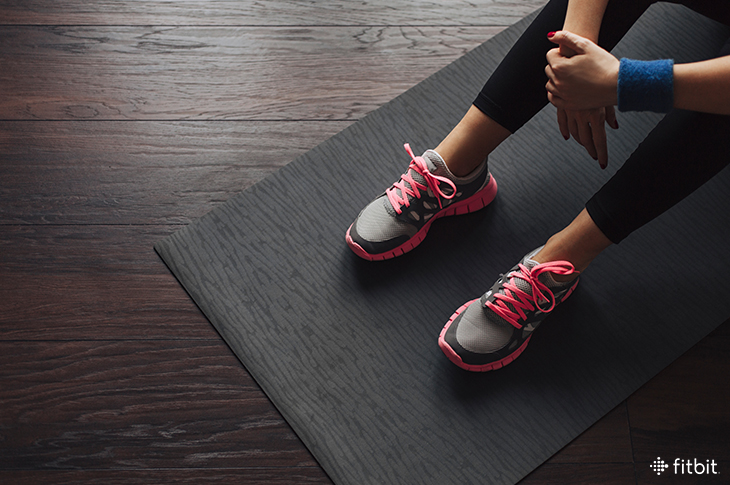
If you’re like the average active person, even a minor injury that sidelines you from a regular workout routine can become a huge headache. You tweak your back, twist your knee, experience shin splints… and all of a sudden, you’re going stir crazy, wondering when you can get back in the game.
Welcome to the dangerous, post-injury gray area. “For rehabbing these common injuries, the timeframe is generally two to four weeks,” says Joseph E. Herrera, DO, Chairman of the Department of Rehabilitation Medicine at Mount Sinai Beth Israel. “But many of my recreational athletes will feel better after week one or week two—which is when I caution them. During this time, they’re most at risk of reinjury.”
According to Herrera, no matter the injury, the body’s healing process is the same—whether you sprain a ligament, stretch a tendon, or strain a muscle. “With the initial injury, there’s tearing or traction, and the microfibers are injured,” he explains. “Inflammatory factors start to populate and heal the area—and the body has to go through the steps to get back.”
If you get back to running or your basketball league before the body has marched through the whole healing process, your risk of tweaking the injury increases and you put yourself at risk of chronic problems, warns Herrera. “A two-to-four-week problem can suddenly become a three-to-six-month problem,” he says. “The other big issue is that you risk injuring other parts of your body,” For instance, you’re more prone to hurt your left knee when you’re nursing your right one during that comeback run.
Don’t jump back into your regular workouts before you’re ready. Here’s how to know when and how to get back to your routine.
Give It Time
It’s hard, but you need to chill out for at least two to four weeks. If you’re working with a physical therapist, make sure you have an open dialogue about your progress and he’s OK-ing activity. “Use Tylenol, compression, and ice for the injury,” says Herrera. “Things will start to mend, and the inflammatory factors will begin to decrease.”
Know the “Return to Play” Guidelines
There are two things you must achieve before you begin to build your activity level back up again, says Herrera. “You need pain-free range of motion and pain-free sport-specific action,” he says. If you can’t cock your shoulder back to throw a baseball after an arm injury, or you can’t run without feeling a little knot of pain in your knee after spraining it, you’re not ready yet.
Follow the Rule of 10
Once you are finally pain-free (whoo!), you’re still in a dangerous period of re-injury. Herrera advises taking your activity level from before the injury, and cutting it in half. “If you were running four miles before, you’d cut back to two,” he explains. “From there, you can follow the Rule of 10: increase your intensity and duration by 10 percent every 10 days.”
According to Herrera, this might feel like “a painful, gradual increase” if you’re bumping a 4.0mph walk to just 4.2 mph every 10 days, but it’ll be worth it in the long run. You can’t rush the body to heal itself—although many try. If you go through the rehab once the right way, you will be more likely to finally reach that feel-good, full-strength level again, instead of tweaking the problem over and over, creating new ones in the process. Stay the slow and steady course!
Have you recently come back from an injury? Share your tips and advice by joining the conversation below.
This information is for educational purposes only and is not intended as a substitute for medical diagnosis or treatment. You should not use this information to diagnose or treat a health problem or condition. Always check with your doctor before changing your diet, altering your sleep habits, taking supplements, or starting a new fitness routine.

Wouldn’t it be great if I could input data into my fitbit profile when I’m experiencing pain so I can track that data alongside my activity level. There’s a bunch of research happening at Sydney Uni about this — it could be as simple as manually recording fluid intake (existing functionality).
I’m a Marathon runner, I’ve been nursing a pulled muscle injury for about 4 weeks.
I used to heal in about 2 weeks this same type of injuries, but I’m finding out the hard way that once you pass 50 years of age, it is taking me a lot longer to recover from injuries.
I like that you mention to still be mindful of how active you are after an injury, even if you don’t feel pain. While recovering from an injury, there’s always the chance that you can hurt yourself and potentially make the injury worse. I think it’s good to do a rehab program if your injury is serious enough to ensure that you’re back to your best self as soon as possible.
Hey if you are searching for the best game to play on your pc then on our website you will play the most popular and mind twisting game mozilla firefox for your pc with all unlocked level without any download and signup.
Thanks for sharing this informative article with us.
I have been using fitbit for a few months I already see some changes in injured knee also your tips really helping me.